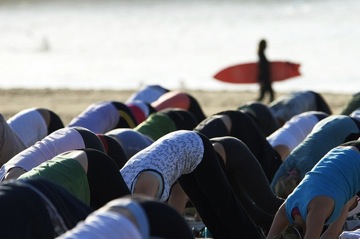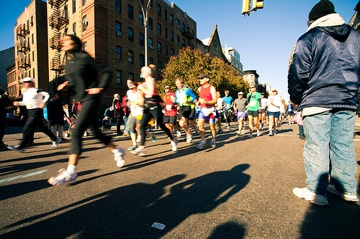
Top and Feature Images By: lululemon athletica
1. For Surfers: Yoga

Yoga on Bondi Beach, Image By: tarotastic
We’ve said it before, and we say it again. Surfing and yoga go hand-in-hand. Vigorous yoga classes help develop the core and upper-body strength to help prevent the nagging lower back pain common in active surfers. Slower-paced classes will help get some of the creaks out of surfers’ shoulders and alleviate back injuries that may already exist.
Yoga also helps calm the mind by drawing attention to breathing patterns, which aids in stress and fear management when dealing with hectic conditions out in the water.


